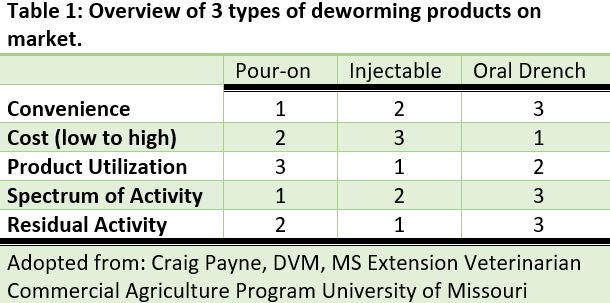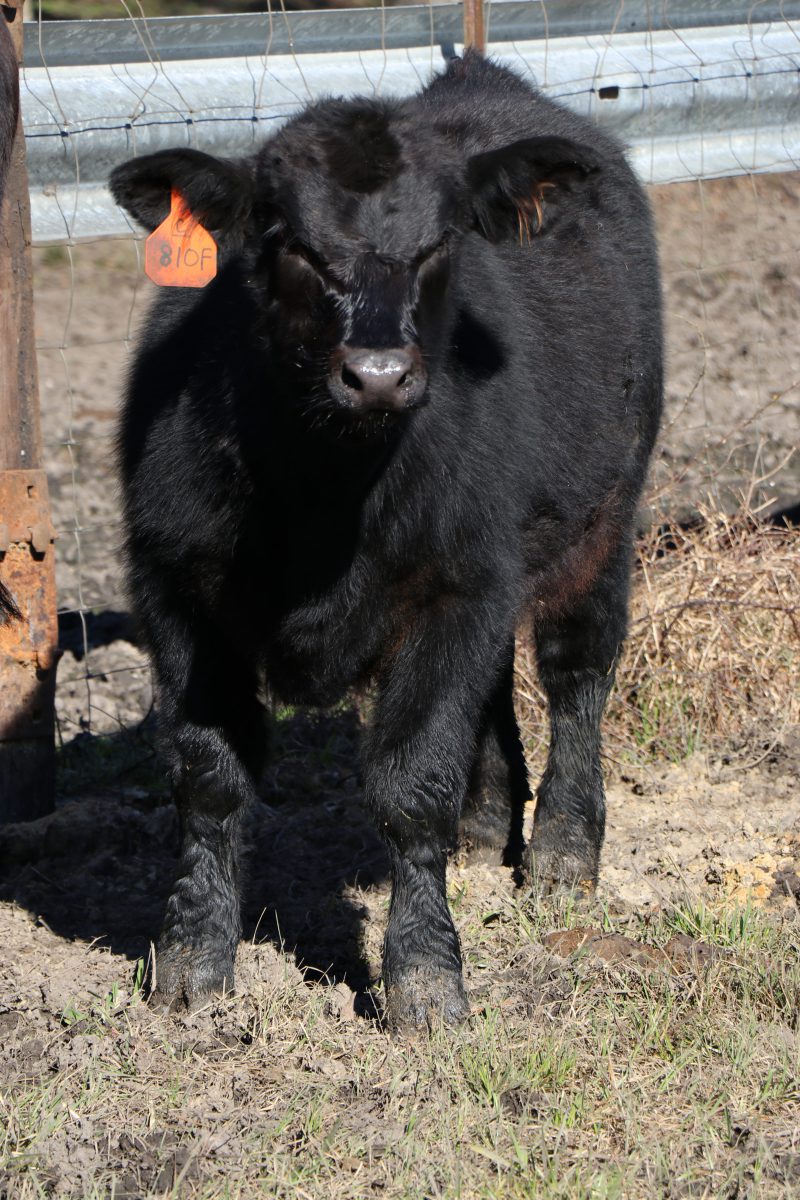Parasites are stressful for cattle. Parasite management can be stressful for producers. When you start shopping and comparing the assortment of dewormer products labeled for use in cattle, the options can be overwhelming. Knowing how critical parasite control is for your herd, this can become a source of stress for cattle producers.
Understanding the different delivery methods and chemical classes of the dewormers currently on the market can help producers make the right herd health decisions. In addition, understanding how the different products work, it will aid in the development of your parasite control protocol. The following is a an overview of dewormer options for cattle producers.
Dewormer Delivery Methods
There are three common delivery methods used for parasite control in cattle: injections (syringe and needle), oral drenches (by mouth), and pour-ons (oil based liquids poured on back). There are pros and cons to each of the different types of products, but each has its place in the industry. In addition to these methods, feeds have been developed to deliver parasite control, and while they can be effective, they are not as commonly used because of the challenges related to accurate dosage. To ensure that all the cattle in your herd are receiving treatment at the correct dosage, injectable, drench, or pour-on dewormers should be used. Table 1 provides a comparison of each delivery method.

The numbers in the table above indicate the ranking of the three types of dewormers, relative to each other. 1 – Highest ranking; 3- Lowest ranking
Chemical Classes of Compounds
You may have noticed when comparing the active ingredients on dewormers that they are all very similar. In most cases, Injectables and pour-ons are the same classes of chemical compound, however, drench wormers are different.
There are three classes of dewormers available on the market today: Benzimidozoles, macrocyclic lactones, and Imidazoles. For the most part, only two of these are widely used.
Benzimidozoles are commonly called the “white dewormers”. These are given as an oral drench and work as a purge wormer. Meaning that they provide no residual protection, but do kill the parasites within the animal at the time of administration. These do a good job of controlling Haemonchus, Nematodirus, and Cooperia.
Macrocyclic lactones are the injectable or pour-on dewormers that enter in the bloodstream to provide residual control, typically for 30 to 45 days, depending on product used. Length of control for pour-on’s can vary with weather and application practice. These include the avermectin and milbemycins compounds. These do a good job of controlling Ostertagia (brown stomach worm) and getting inhibited larvae.
The third are the Imidazoles, that have no residual effects. These are still effective products, but have lost popularity because the two newer compounds available with longer residual control. But they can be useful to prevent resistance to benzimidozoles and macrolides, or to provide control when handling facilities are not accessible.
Additional considerations (recommended by Dr. Alley, Technical Service Veterinarian and Billy Arrighi, Senior Territory Business Manager, Zoetis Animal Health)
In modern agriculture, sickness (morbidity) and death (mortality) are not as commonly associated with internal parasites as they once were. Preventing losses in productivity have become the primary target for internal parasite control. Internal parasites decrease the average daily gain by suppressing dry matter intake and disrupting normal digestion of feedstuffs that are consumed.
Parasites directly suppress the immune system, decreasing the animal’s ability to fight infection or respond to vaccines to build anitbodies to fight off disease.
Focus deworming programs on the most susceptible classes of cattle (the list is most susceptible to least)
- Young calves
- Stocker / Background calves
- Replacement heifers
- Bulls (males are generally more susceptible to parasites than females)
- Cows > 3 years of age
- Horn Fly Control In Cattle - June 20, 2025
- Tips for Introducing New Chickens into Your Coop - April 25, 2025
- Tips for a Great Chicken Coop - April 11, 2025

